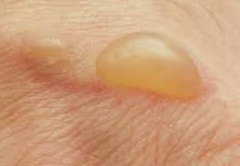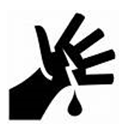
Blisters are one of the most common sports injuries particularly for those customers that run or jog. They are small pockets of fluid that form when the skin has been damaged, to protect the underlying tissue while it heals.
Symptoms of Blisters
Most blisters are painless without pressure or friction being placed on them e.g. walking or shoes rubbing. As the skin underneath the blister heals the body reabsorbs the fluid and the skin left behind dries and peels off.
Blisters can fill with blood or pus (if they become infected) these can be more painful than other blisters and the skin around the blister may become red and feel hot. You should refer a customer to the pharmacist if a blister becomes infected, is extremely painful, reappears regularly or develops in unusual places (e.g. eyelids or in the mouth). Should a blister become infected antibiotics may be prescribed.
Causes of Blisters
The most common causes of blisters are:
- Friction e.g. shoes rubbing.
- Heat on the skin e.g. sunburn.
- Allergic reaction e.g. chemicals and detergents.
- Medical conditions e.g. chickenpox or herpes.
Treatment for Blisters
Many blisters heal naturally without treatment. A blister is a natural barrier and should remain intact to avoid infection. If a customer has a blister you should advise the following:
- Never pierce a blister; always allow the blister to burst naturally.
- Use dressings such as plasters to protect the blister.
- Change any dressings daily.
- Always wash your hands before touching a blister to avoid infection.
- When a blister bursts allow the dead skin to fall off do not peel it.
If a customer finds that their blister is causing discomfort or is in a position on the body which causes aggravation e.g. back of the ankle, a blister plaster can be recommended from your OTC lines which will provide a cushion to protect against friction.
Preventing Blisters
There are a number of ways to help prevent friction blisters developing; here are some tips you can provide to customers:
- Always wear comfortable, well-fitting shoes.
- Do not wear brand new shoes that haven’t been broken in for long periods of exercise.
- Blisters are more likely to develop on moist skin so wear moisture absorbing socks.
- Always wear clean socks and change regularly.
- Wear socks that are suitable for the activity e.g. sports socks.
Cuts and Grazes

Cuts and grazes are particularly common when playing contact sports such as football. They are usually minor injuries and can be treated at home.
